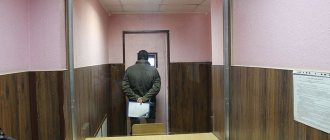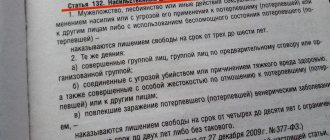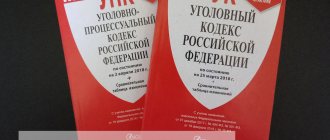Butyrka prison: where is it located?
Butyrskaya prison is located in Moscow, on Novoslobodskaya street, 45. Officially, this is the pre-trial detention center of the Federal Penitentiary Service of the Federal Penitentiary Service of the Russian Federation.
Like many other Moscow prisons, Butyrka was often overcrowded. The prisoner detention regulations set a limit of 2,000, but in practice there are up to 3,500 prisoners. Currently there are about 2,500 prisoners in Butyrka.
Butyrka does not have its own official website, but it has an email ( [email protected] ) and telephone numbers:
- +7 – head of the detention center, Colonel S.V. Telyatnikov;
- +7 – pre-trial detention center helpline;
- +7 – helpline of the FSIN management.
Letters to Butyrka can be written to the address 127055, Moscow, Novoslobodskaya 45.
The number of letters and parcels is not limited, since not only convicts, but also persons under investigation are kept in the detention center. But all shipments are registered, so their receipt by recipients is often delayed.
It must be remembered that if prohibited items are found in a parcel, the sender may be subject to administrative or criminal liability.
✅ Transfer rules
The rules for transferring items and food products must be clarified before sending, as the requirements may vary slightly depending on the institution.
What is a criminal offense and how does it differ from other offenses?
Read
Temporary detention center. Rules for the detention of accused and suspects
More details
Criminal record. Is it possible to get rid of its consequences and restore your good name?
Look
Packaging requirements
Bulk products (tea, coffee, milk powder) must be poured from the original packaging into a transparent bag in advance. Cigarettes in packs are allowed to be delivered in original packaging only if they were purchased in a store at a pre-trial detention center. In other cases, they should be removed from the packs and carefully tied with threads so that the products are not damaged during transportation. Candies are also accepted without wrappers.
All bags should be tied so that during inspection they can be easily untied and tied back.
All items intended for transfer must be placed in a large bag in which they will be given to the prisoner.
Registration of transfer from the administration of the pre-trial detention center
In order to deliver a parcel to a prisoner in a pre-trial detention center, you must come to the detention center and write a statement in the prescribed form.
The application should indicate:
- Last name, first name and patronymic of the applicant.
- His registered address.
- Degree of relationship with the prisoner.
- A request to transfer the parcel to the prisoner and his full name.
- List of transferred items.
- Date and signature of the applicant.
The application form can also be taken to the pre-trial detention center where the prisoner is staying.
The completed document is handed over to the pre-trial detention center staff, after which they begin to inspect the transferred items and food products, according to the list provided. If there are no items prohibited for transfer, the pre-trial detention center officer signs the application, thereby authorizing the transfer.
The application is drawn up in two copies - one of them remains with the employees of the institution, the second is given to the prisoner so that he can compare the list of transferred things with the inventory.
Arrest in absentia. How can a suspect be taken into custody in his absence?
Read
How to transfer a convicted person to the place of residence of relatives
More details
Optimization of colonies and pre-trial detention centers. Why are they planning to move them outside the cities?
Look
Admission schedule and conditions
Relatives are allowed to visit prisoners once every two months for four hours.
The date takes place in the constant presence of a guard, and any contact, be it a handshake or a hug, is prohibited.
No more than two adults are allowed per visit. The number of minors is not limited. There is also no limit on the number of visits to a lawyer.
Prisoners who are on a light regime, as well as on a general regime, can get a long visit in a hotel-type room. Room rent is paid, and the frequency of meetings is once every 2 months. For the general regime - once every three months. Meetings start at 9 am. The place is located within walking distance from the Mendeleevskaya, Novoslobodskaya and Savelovskaya metro stations.
Paper letters
Some people prefer to use standard paper letters. The disadvantages of this method include :
- long shipping;
- there is a possibility of the message being lost;
- difficult to find envelopes and stamps.
Before composing the text, you must correctly write the address of the institution where the prisoner is located. All letters undergo a detailed check and are also registered in a special journal. The envelope indicates the name and date of birth of the addressee. It is forbidden to use nicknames or make mistakes. Additionally, the name and address of the institution are indicated.
Only simple letters are sent, since they cannot be delivered personally to the citizen. To obtain information about the pre-trial detention center, you can use the Internet or call the administration of the institution.
Peculiarities
Perhaps the main features of “Butyrka” are its glorification in culture, as well as the size of the cameras. This prison is mentioned in numerous films, books, and songs.
Since many prisoners were kept in large cells at the same time, stable connections were formed between them. Thus, contrary to the logic of imprisonment, Butyrka contributed to the development of many criminal groups. Their joint actions continued in the wild.
Since 1996, women have stopped being sent to this pre-trial detention center. The exception is when they undergo a psychiatric examination in a small clinic on the territory of the prison.
Are all emails checked?
Absolutely all documents sent to prisoners are subject to verification. Censors examine the contents of each letter because it is important to ensure that there is no prohibited information. Although by such actions employees of institutions violate the personal rights of citizens, this is a necessary necessity, since one participant in the correspondence is a suspect or a convicted person.
Persons in custody are considered as citizens who are capable of criminal acts, therefore, in such correspondence one can find plans for further criminal activity.
History of Butyrka prison
“Butyrka” traces its history back to the time of Catherine the Second. At that time the prison was made of wood, and gained fame due to the detention of Emelyan Pugachev in it. After the construction of the stone prison in 1879, one of its towers was named Pugachevskaya.
The project of a stone prison with four towers and a temple in the center was created by the architect M. Kazakov. This building still stands today. The church has also been preserved.
Since 1868, “Butyrka” became a transit prison, where convicts for hard labor in Siberia were formed. At that time, a hundred or more people were kept in cells at a time. There was a special room in the prison for the wives of prisoners who wanted to go with them to hard labor in Siberia.
Among the interesting cases of that time: in 1873, a group of counterfeiters were discovered in Butyrka, minting money right in the prison. And in 1899, Leo Tolstoy visited the prison and walked with the convicts to the station to describe their journey in the novel “Resurrection.”
In 1905, during the first Russian revolution, rebel workers tried to seize the prison, but the attack was repulsed by a dragoon regiment.
In 1908, Harry Houdini himself performed before the prisoners. He managed to do what all the prisoners dreamed of - to free himself from the box where he, shackled, was placed before the performance. It took the maestro 28 minutes to do this.
In the pre-revolutionary years, there were many political prisoners among the prisoners.
Have a question for a lawyer? Ask now, call and get a free consultation from leading lawyers in your city. We will answer your questions quickly and try to help with your specific case.
Telephone in Moscow and the Moscow region: +7
Phone in St. Petersburg and Leningrad region: +7
Free hotline throughout Russia: 8 (800) 301-39-20
Prison during the years of Soviet power
The composition of prisoners remained largely the same after the revolution. The prison population reached its peak during Stalin's terror. Then there were about 20 thousand people in Butyrka. There could be up to 170 in one cell! Most of them were shot.
Throughout the 20th century, this detention center was the main pre-trial prison in Moscow. Photos of “Butyrka” can be seen in completely different publications from different eras.
During the war, workshops were created in the prison to produce items needed by the army. Prisoners worked in them.
Scenes for the famous TV series “17 Moments of Spring” were filmed in the Butyrka administration buildings.
Modern history of Butyrka
The 1990s and 2000s were also full of events for this pre-trial detention center. Famous oligarchs and leaders of the criminal world were kept here, and escapes were made. In 1994, they tried to hold a criminal meeting in Butyrka. That is, the thieves from the outside wanted, by agreement with the prison employees, to visit their comrades in prison. As a result, more than 30 people were detained, including administration employees who conspired with the prisoners.
On the territory of the pre-trial detention center, the temple, closed in 1922, began to operate again. The issue of buying out the prison building, which is an architectural and cultural value, has been repeatedly raised. But the administration asked to build a new isolation ward instead. Potential buyers rejected this idea because the cost of an isolator with all the necessary safety measures was too expensive.
Many prisoners still work today in workshops left over from Soviet times. These are mainly carpentry workshops, including those processing valuable wood species.
FSIN-visit service
It is intended for investigators and lawyers because it allows you to make an appointment with a suspect or prisoner in advance. In this case, we offer registration for 22 days in advance. To use the service, you will have to register and log in.
After registering, you need to visit the selected institution at the appointed time. But you will have to sit in a live queue. Only 1 account is registered, but you can take an assistant to the appointment. Registration for 2 different days is allowed , and it can be canceled if necessary. You cannot transfer your recording to third parties. The system is currently in trial mode, so errors may occur.
In which regions does it operate?
You can not use the FSIN-visit service in all cities of the country. The exact list is on the institution's website. Now such a recording is available in the capital, St. Petersburg, Tomsk, Astrakhan, Khabarovsk, Krasnodar and some other regions.
The number of regions will gradually increase, which will significantly simplify the process of interaction between investigators and lawyers with suspects and convicts.
How to use
To make an appointment through the FSIN visit, follow these steps::
- The organization’s website opens - https://fsin-vizit.ru;
- registration and authorization are carried out;
- select the desired region from the list provided on the main page;
- a list of institutions opens where you can make an appointment using this service;
- press the “Graph” button;
- a suitable day and time for visiting is selected.
The procedure does not take much time, but often there are no available places for upcoming dates.
Escapes from Butyrka prison
Over the long history of Butyrka, many attempts have been made to escape. Including successful ones. But during the Soviet period, there was not a single successful escape. But before the revolution, and after the collapse of the USSR, there were quite a few of them. Among the latest:
- Escape in 1992;
- In 1996, a female prisoner escaped, as did two men the same year;
- In 2001, three people sentenced to life imprisonment dug and escaped;
- That same year, one prisoner escaped from the visiting room;
- In 2010, a man convicted of rape squeezed out the bars and escaped through a window.
All the fugitives were caught quickly, except for one prisoner who made the most daring escape, in front of the guard. He managed to travel to Finland, where he was detained only two years later.







